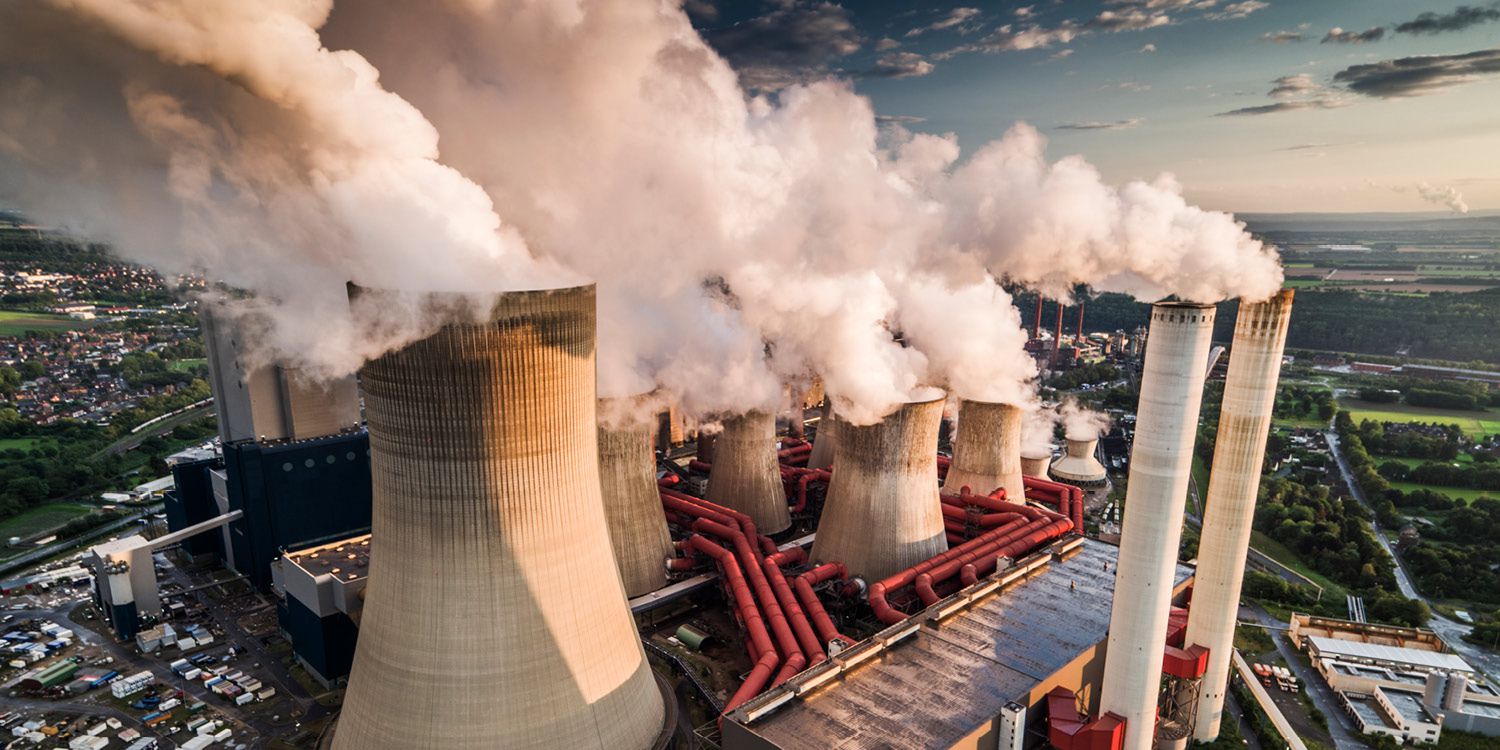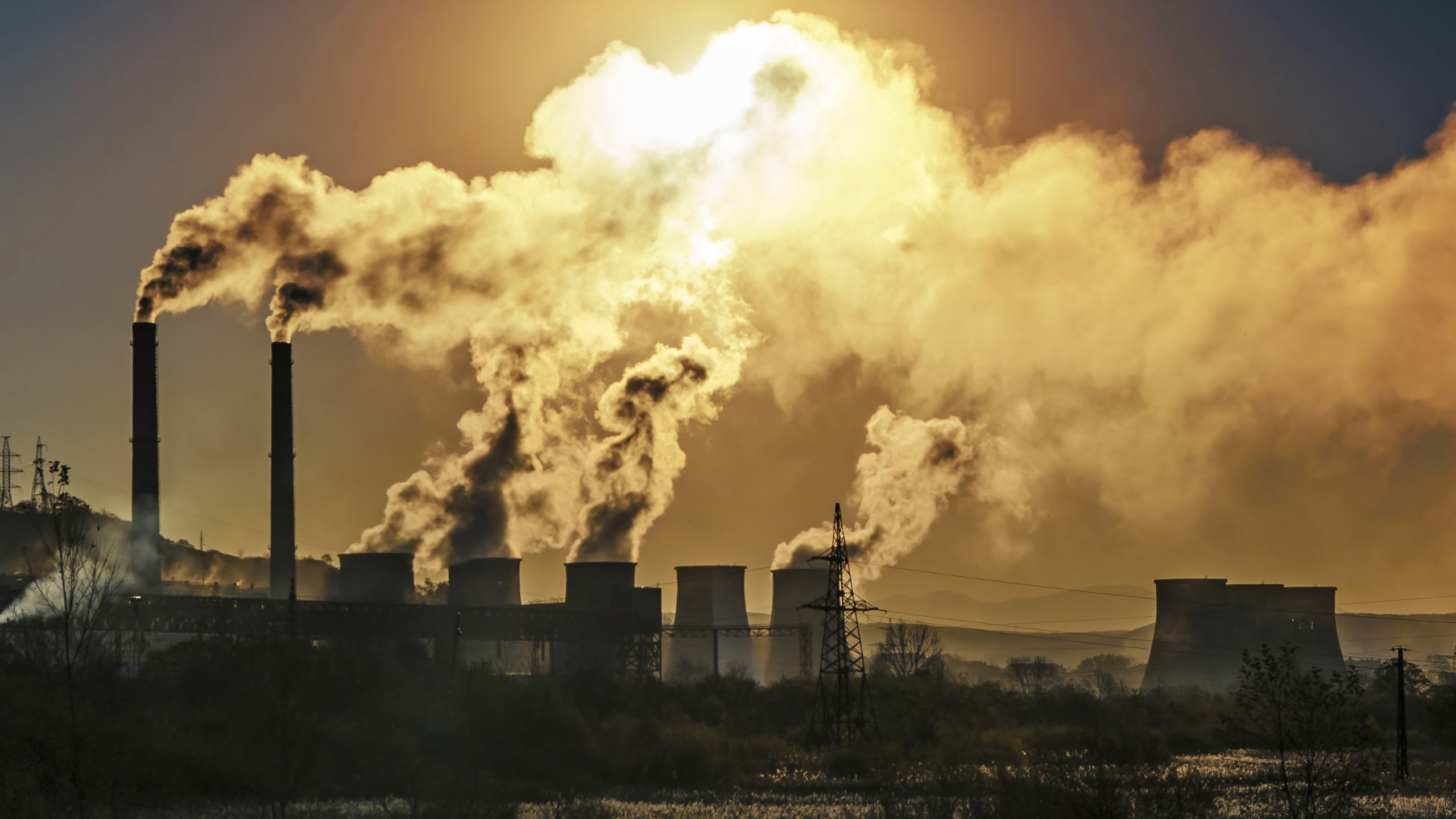Home>Gardening News and Trends>What Would Happen Without Greenhouse Gases


Gardening News and Trends
What Would Happen Without Greenhouse Gases
Modified: January 22, 2024
Discover the latest news on what would happen without greenhouse gases. Explore the potential consequences and implications of a world without this crucial environmental factor.
(Many of the links in this article redirect to a specific reviewed product. Your purchase of these products through affiliate links helps to generate commission for Chicagolandgardening.com, at no extra cost. Learn more)
Table of Contents
Introduction
Greenhouse gases play a crucial role in regulating the Earth’s climate and maintaining the delicate balance that sustains life as we know it. These gases, such as carbon dioxide (CO2), methane (CH4), and nitrous oxide (N2O), act like a blanket in the atmosphere, trapping heat from the sun and preventing it from escaping back into space.
Without the presence of greenhouse gases, our planet would be a drastically different place. The absence of these gases would lead to extreme temperature fluctuations, altered weather patterns, and the disruption of ecosystems worldwide. The impacts would be far-reaching and have profound consequences for all living organisms.
Understanding the role of greenhouse gases and their effects is crucial for comprehending the significance of climate change and the need for mitigation strategies. In this article, we will delve into the world without greenhouse gases, exploring the potential consequences and highlighting the importance of a sustainable future.
Understanding Greenhouse Gases
Greenhouse gases are compounds that trap heat in the Earth’s atmosphere, contributing to the greenhouse effect. They include carbon dioxide (CO2), methane (CH4), nitrous oxide (N2O), and fluorinated gases. These gases are released into the atmosphere through natural processes like volcanic eruptions and the decay of organic matter, as well as human activities such as burning fossil fuels, deforestation, and industrial processes.
One of the key properties of greenhouse gases is their ability to absorb and emit infrared radiation, which is the heat energy radiated from the Earth’s surface. When sunlight reaches the Earth’s surface, it warms the surface, which then radiates heat back into the atmosphere. Greenhouse gases absorb some of this outgoing heat and re-radiate it in all directions, including back toward the Earth’s surface. As a result, they effectively trap heat within the Earth’s atmosphere, just like the walls of a greenhouse.
It is important to note that not all greenhouse gases are equally potent in terms of their warming potential. For example, carbon dioxide is a long-lived gas that remains in the atmosphere for centuries, while methane has a higher warming potential but a shorter lifespan. Additionally, different greenhouse gases have varying sources and contribute to the greenhouse effect in different ways.
The increased concentration of greenhouse gases in the atmosphere, particularly carbon dioxide, has been linked to the phenomenon of anthropogenic climate change. Human activities, such as burning fossil fuels for energy and deforestation, have significantly increased the levels of greenhouse gases in the atmosphere. As a result, the Earth’s average surface temperature has been rising, leading to a range of adverse effects on the planet.
It is crucial to understand the role of greenhouse gases in order to address the challenges posed by climate change. By reducing greenhouse gas emissions and finding sustainable alternatives to fossil fuels, we can mitigate the impacts of climate change and work towards a more environmentally conscious future.
The Role of Greenhouse Gases in Climate Regulation
Greenhouse gases are essential for maintaining a habitable climate on Earth. They act as a natural thermostat, regulating the temperature and preventing extreme heat or cold. Without these gases, our planet would be uninhabitable, with stark temperature variations and an inhospitable environment.
One of the primary functions of greenhouse gases is to trap heat in the atmosphere. Sunlight passes through the Earth’s atmosphere and warms the surface. This energy is then radiated back into space as infrared radiation. However, greenhouse gases absorb some of this incoming radiation, preventing it from escaping into space and keeping the Earth warm.
Carbon dioxide, the most prevalent greenhouse gas, plays a vital role in climate regulation. It allows visible light to pass through, warming the Earth’s surface. However, when the surface radiates heat back into the atmosphere, CO2 absorbs and re-emits much of the outgoing infrared radiation, trapping it and maintaining a stable temperature.
Methane, although present in smaller quantities, is an even more potent greenhouse gas. It has a warming potential around 25 times that of carbon dioxide over a 100-year period. Methane is released from various sources, including livestock farming, rice cultivation, and the decomposition of organic waste. Despite its lower atmospheric concentration, its ability to trap heat makes it a significant contributor to climate change.
Nitrous oxide, primarily released from agricultural and industrial activities, also contributes to the greenhouse effect. It has a warming potential about 300 times greater than carbon dioxide and can remain in the atmosphere for centuries.
These greenhouse gases, along with others like fluorinated gases, create a delicate balance in the Earth’s atmosphere. They provide a natural insulation layer that helps maintain the global temperature at a level suitable for supporting life.
However, recent human activities have resulted in an unprecedented increase in greenhouse gas levels, primarily due to the burning of fossil fuels. The excessive release of carbon dioxide has intensified the greenhouse effect, causing the Earth’s temperature to rise rapidly, leading to the phenomenon known as global warming.
Understanding the role of greenhouse gases in climate regulation is crucial for addressing the challenges brought about by climate change. It highlights the need for immediate action to reduce greenhouse gas emissions, transition to renewable energy sources, and adopt sustainable practices to ensure a stable and healthy climate for future generations.
Impacts of Removing Greenhouse Gases
While it may seem counterintuitive, removing greenhouse gases from the Earth’s atmosphere would have profound consequences for our planet. The absence of these gases would disrupt the delicate balance that regulates the Earth’s climate, leading to a cascade of impacts affecting the environment, weather patterns, and ecosystems worldwide.
One of the immediate effects of removing greenhouse gases would be a significant drop in global temperatures. Without the warming effect of these gases, the Earth would lose its insulation, resulting in a much colder climate overall. This would lead to widespread freezing temperatures, particularly in high latitude regions, making them uninhabitable for many species.
Additionally, the absence of greenhouse gases would have a drastic impact on weather patterns. These gases play a role in regulating the distribution of heat around the globe, helping to create and maintain weather systems. Without their presence, weather patterns would become highly unpredictable, with extreme temperature fluctuations, stronger storms, and a higher risk of severe weather events.
The removal of greenhouse gases would not only alter the Earth’s climate but also have severe consequences for ecosystems. Many plant and animal species have adapted to the current climate conditions, and sudden changes in temperature and precipitation patterns would disrupt their habitats and threaten their survival. This could lead to the loss of biodiversity, as species are unable to adapt quickly enough to the new conditions.
Furthermore, the absence of greenhouse gases would have a profound impact on oceanic circulation. These gases contribute to the warming of the oceans, which influences currents and circulation patterns. Without their presence, ocean currents could slow down or change direction, which would affect nutrient distribution, marine ecosystems, and fish populations. This, in turn, would have far-reaching consequences for the livelihoods of coastal communities and the global food chain.
It is important to note that the impacts of removing greenhouse gases would not be limited to the Earth’s surface. The greenhouse effect also plays a crucial role in regulating the temperature of the Earth’s atmosphere, preventing it from becoming too cold for life to exist. Without this regulation, the upper atmosphere would cool down rapidly, potentially leading to the loss of protective layers such as the ozone layer.
The impacts of removing greenhouse gases would be far-reaching and have long-lasting effects on our planet. It is essential to understand the importance of these gases in climate regulation and the need for sustainable practices to reduce their emissions. By taking action to mitigate climate change and transition to renewable energy sources, we can help maintain a stable and healthy climate for future generations.
Changes in Temperature
If greenhouse gases were to be completely removed from the Earth’s atmosphere, the planet would undergo drastic changes in temperature. The greenhouse effect, driven by these gases, helps to regulate and maintain the Earth’s average temperature at a level suitable for life. Without the warming effect of greenhouse gases, the Earth would experience significant cooling, leading to a range of consequences.
One of the immediate impacts of removing greenhouse gases would be a sharp decrease in global temperatures. The Earth’s surface would no longer have the insulation provided by these gases, resulting in a loss of the natural heating effect. This would lead to a much colder climate worldwide, with lower temperatures even in regions that are typically temperate or warm.
High latitude regions in both the Northern and Southern Hemispheres would be particularly affected by the absence of greenhouse gases. These regions are already characterized by cold climates, but the presence of greenhouse gases helps to moderate temperature extremes. Without these gases, these areas would become much colder, potentially leading to permanent ice cover and making them uninhabitable for many species.
In addition to changes in average temperature, the elimination of greenhouse gases would also result in increased temperature variability. Without the buffering effect provided by greenhouse gases, the Earth’s climate system would lose its ability to maintain a certain level of stability. This would lead to more frequent and extreme temperature fluctuations, with periods of intense heat followed by sudden and severe cold spells.
Extreme temperature changes would have a profound impact on both human and natural systems. Human health and well-being would be at risk, as cold temperatures can lead to increased mortality rates, especially among vulnerable populations. Agriculture would be severely affected, with crops and livestock struggling to adapt to the new temperature conditions. Ecosystems, particularly those sensitive to temperature changes, would also face challenges, with species potentially struggling to survive in the altered climate.
Moreover, the absence of greenhouse gases would not only impact surface temperatures but also influence temperature profiles in the atmosphere. The upper atmosphere would cool down rapidly without the warming effect provided by these gases. This cooling could disrupt atmospheric stability and circulation patterns, potentially leading to changes in weather systems and atmospheric phenomena such as jet streams and formation of clouds.
The changes in temperature resulting from the removal of greenhouse gases would have significant implications for the planet’s climate system. It is important to understand the vital role that these gases play in maintaining a habitable environment and to take action to reduce greenhouse gas emissions and mitigate the impacts of climate change.
Effects on Weather Patterns
If greenhouse gases were removed from the Earth’s atmosphere, the absence of these gases would have a profound impact on weather patterns across the globe. Greenhouse gases contribute to the regulation of heat distribution and the formation of weather systems. Without their presence, the Earth’s weather patterns would undergo significant changes, resulting in unpredictable and potentially more extreme weather events.
One of the immediate consequences of removing greenhouse gases would be the disruption of the balance between temperature and moisture in the atmosphere. Greenhouse gases help to retain heat and moisture, creating a stable environment for weather systems to develop. Without them, the atmosphere would become more unstable, leading to more frequent and severe weather events.
Temperature variations would become more pronounced, with more extreme heatwaves and cold snaps. The absence of greenhouse gases would limit the atmosphere’s ability to moderate temperatures, leading to more rapid temperature changes and increased temperature extremes. These changes would impact both human populations and ecosystems, posing risks to human health, agriculture, and wildlife.
Precipitation patterns would also be affected by the removal of greenhouse gases. Greenhouse gases play a crucial role in the process of evaporation and condensation, which drive the formation of clouds and precipitation. Without their presence, the water cycle would be disrupted, potentially leading to regional droughts or increased rainfall intensity in certain areas.
Changes in weather patterns would also impact storm systems. Greenhouse gases play a role in the development and intensity of storms, including hurricanes, typhoons, and tornadoes. Their absence would alter the conditions necessary for the formation and strength of these storms, making them harder to predict and potentially more severe.
Moreover, the absence of greenhouse gases would affect atmospheric circulation patterns. These gases help drive the movement of air masses and the formation of pressure systems, which influence wind patterns and weather conditions. Without their presence, the distribution of air masses and the behavior of atmospheric systems would be altered, leading to changes in wind patterns and the occurrence of weather phenomena.
The impacts of changes in weather patterns can have far-reaching consequences. Agriculture and food production would be significantly affected, as unpredictable weather patterns would make it challenging to plan and manage crops. Flooding events may occur more frequently in some areas, while droughts could become more severe in others. The frequency and intensity of wildfires could also increase, posing risks to ecosystems and human communities.
Understanding the role of greenhouse gases in shaping weather patterns is crucial for developing strategies to mitigate and adapt to the impacts of climate change. By reducing greenhouse gas emissions and promoting sustainable practices, we can help maintain a more stable and predictable climate for the future.
Disruption of Ecosystems
The removal of greenhouse gases from the Earth’s atmosphere would have profound consequences for ecosystems worldwide. Greenhouse gases play a critical role in maintaining the balance of ecosystems by regulating temperature, influencing rainfall patterns, and shaping the overall climate conditions. Without their presence, ecosystems would face significant disruption, leading to the loss of biodiversity and the collapse of essential ecological processes.
One of the primary impacts of removing greenhouse gases would be the alteration of temperature regimes. Ecosystems have adapted to specific temperature ranges, and sudden changes in temperature could disrupt the delicate balance of plant and animal life. Some species may struggle to adapt to the new temperature conditions, leading to a decline in populations and potential extinction.
Changes in rainfall patterns would also occur without greenhouse gases. These gases play a role in the formation of clouds and precipitation. Removing greenhouse gases would disrupt the water cycle and lead to shifts in rainfall distribution. This would affect the availability of water, altering habitats and affecting the productivity of plant life, which forms the foundation of most ecosystems.
Changes in temperature and precipitation patterns would have cascading effects on the distribution and abundance of species. Different species have specific temperature and moisture requirements for survival and reproduction. The removal of greenhouse gases would result in habitat changes, pushing species to migrate or, in some cases, causing local extinctions.
The disruption of ecosystems would not only impact terrestrial environments but also have significant consequences for aquatic ecosystems. Changes in temperature and rainfall patterns would affect aquatic habitats, including rivers, lakes, and oceans. Many marine species, from microscopic plankton to larger marine mammals, depend on stable and suitable conditions for their survival and reproduction. Without greenhouse gases, these ecosystems would face disruption, with potential impacts on food chains and marine biodiversity.
Additionally, the absence of greenhouse gases would affect the nutrient cycles that are vital for ecosystem functioning. Greenhouse gases play a role in the decomposition of organic matter, nutrient availability, and the functioning of soil microbial communities. Changes in these processes would impact the fertility of soils, nutrient cycling, and plant growth, leading to further disruptions in ecosystems.
The disruption of ecosystems would have far-reaching consequences for human societies as well. Ecosystems provide crucial services, including clean water, air purification, carbon sequestration, and natural resources. The loss of these services could lead to reduced agricultural productivity, increased vulnerability to natural disasters, and a decline in overall human well-being.
Understanding the importance of greenhouse gases in maintaining the health and functioning of ecosystems is essential for conserving biodiversity and ensuring the resilience of our planet. It is crucial to reduce greenhouse gas emissions, protect and restore natural habitats, and promote sustainable practices to mitigate the disruption of ecosystems and safeguard our planet’s biodiversity and ecological balance.
Altered Oceanic Circulation
The removal of greenhouse gases from the Earth’s atmosphere would have a significant impact on oceanic circulation patterns, leading to changes in currents and disrupting the delicate balance of marine ecosystems worldwide. Greenhouse gases play a crucial role in regulating the temperature of the oceans and driving the circulation patterns that distribute heat and nutrients. Without their presence, the oceanic circulation would be altered, resulting in far-reaching consequences.
Ocean currents are driven by various factors, including temperature differences, wind patterns, and Earth’s rotation. Greenhouse gases contribute to warming the oceans, which influences the density and circulation of water masses. With their absence, ocean temperatures would decrease, affecting the driving force behind many global and regional currents.
One of the notable impacts of altered oceanic circulation would be the disruption of nutrient distribution. Ocean currents play a vital role in transporting and redistributing nutrients, which are essential for the growth and survival of marine organisms. Changes in the circulation patterns would impact the availability of nutrients in different regions, potentially leading to imbalances and affecting the productivity of marine ecosystems.
Altered oceanic circulation would also affect the distribution of marine species. Many marine organisms, including plankton, fish, and marine mammals, rely on specific current systems for feeding, reproduction, and migration. Changes in currents could disrupt these patterns, leading to shifts in species distributions and potential mismatches between predator and prey.
Furthermore, altered oceanic circulation would impact the ocean’s ability to absorb and store carbon dioxide. The oceans act as a significant sink for carbon dioxide, absorbing a significant portion of the greenhouse gas from the atmosphere. This uptake, facilitated by oceanic circulation, helps to mitigate climate change. Without the natural circulation patterns driven by greenhouse gases, the capacity of the oceans to absorb carbon dioxide would be reduced, potentially leading to higher atmospheric concentrations of this greenhouse gas.
The disruption of oceanic circulation would also influence sea surface temperatures and weather patterns. Currents help transport heat energy across the oceans, influencing water temperature and regulating the exchange of heat with the atmosphere. Changes in circulation patterns would impact these temperature distributions, which, in turn, could influence weather systems, including the formation and intensity of storms and hurricanes.
Altered oceanic circulation would not only impact the marine environment but also have implications for coastal communities and economies. Many coastal regions rely on predictable ocean currents for activities such as fishing, shipping, and tourism. Changes in circulation patterns could disrupt these industries, posing risks to livelihoods and local economies.
Understanding the crucial role of greenhouse gases in driving oceanic circulation is vital for comprehending the intricacies of marine ecosystems and their role in the Earth’s climate system. Taking action to reduce greenhouse gas emissions and adopting sustainable practices is essential to mitigate the potential disruptions to oceanic circulation and preserve the health and integrity of marine ecosystems.
Conclusion
Greenhouse gases play a vital role in regulating the Earth’s climate, maintaining temperature balance, and supporting the intricate web of life on our planet. Their presence in the atmosphere acts as a natural thermostat, trapping heat and preventing it from escaping back into space. However, the excessive release of greenhouse gases, primarily due to human activities, has led to unprecedented climate change and its associated impacts.
Removing greenhouse gases from the Earth’s atmosphere would have far-reaching consequences. It would disrupt the delicate balance of temperature, weather patterns, and oceanic circulation, leading to drastic changes in the environment and ecosystems. The loss of these gases would result in extreme temperature fluctuations, altered rainfall patterns, and the disruption of nutrient distribution in both terrestrial and marine environments.
These changes would have profound consequences for biodiversity, with species facing challenges in adapting to the new conditions and potential habitat loss. Human societies would also be affected, with disruptions in agriculture, increased vulnerability to extreme weather events, and potential economic consequences.
Understanding the importance of greenhouse gases is crucial for addressing the challenges posed by climate change. It highlights the need for collective action to reduce greenhouse gas emissions, transition to renewable energy sources, and adopt sustainable practices. By doing so, we can mitigate the impacts of climate change, protect ecosystems, and safeguard the well-being of present and future generations.
It is essential for individuals, communities, governments, and industries to come together, taking responsibility for reducing greenhouse gas emissions and promoting sustainable practices. By embracing renewable energy, conserving natural resources, and adopting eco-friendly methods, we can work towards a more resilient, sustainable, and climate-conscious future.
Let us recognize the role of greenhouse gases in maintaining a habitable planet and strive towards a harmonious coexistence with the environment. The choices we make today will shape the world we leave behind for future generations.








